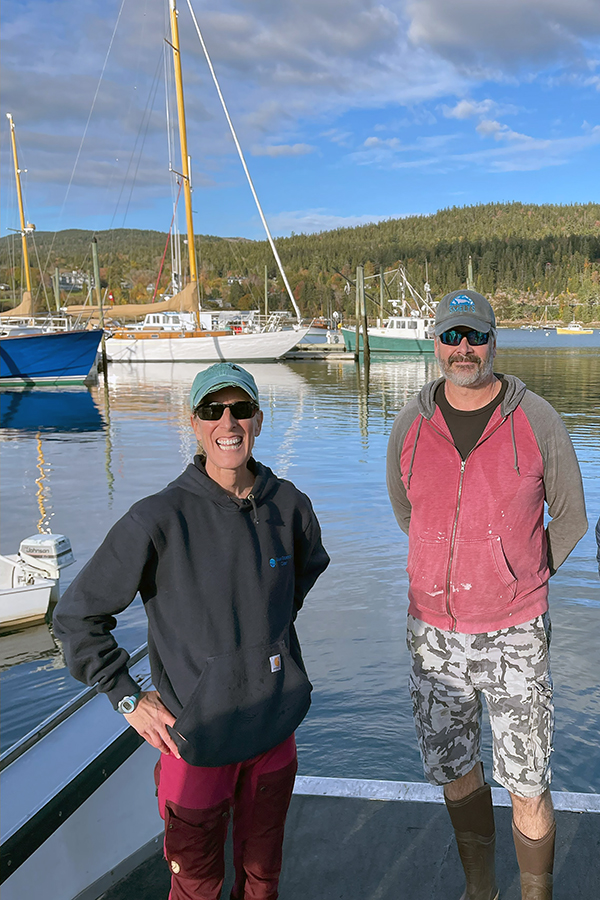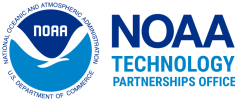When a small business uses NOAA seed funding to transform an idea into a technology that is available on the open marketplace, it is a big win for both the company and the NOAA Small Business Innovation Research (SBIR) program. But it is a unique double-win when two NOAA-funded small businesses team up to combine their innovative technologies for a good cause.
California-based Blue Ocean Gear and Washington-based Crab Raft, Inc. saw an opportunity to collaborate on their respective technologies for a common goal: to develop gear for the fishing industry which is safer for marine mammals, and easier for fishermen to use. Traditional fishing gear uses rope, which is heavy, difficult to deploy and retrieve, and takes up a large amount of storage space on boats. Fishing gear rope can also cause entanglement of ocean mammals. Blue Ocean Gear and Crab Raft are working to develop fishing technology to help resolve entanglement issues. Both small businesses received NOAA SBIR Phase I and Phase II seed funding to help get their ideas off the ground and subsequently position their products for the commercial market.

The ah-ha moment came in 2018, after Kortney Opshaug of Blue Ocean Gear and Richard Riels of Crab Raft met at the International Marine Debris Conference in San Diego, California. Their paths have repeatedly crossed at various small business gatherings since then, such as a NOAA SBIR Demo Day in Washington, D.C. in 2022, where Osphaug won a presentation competition. After hearing Opshaug give a presentation on the future of the smart buoy technology, Riels introduced himself, and their collaborative relationship began.
At the time of their meeting, Blue Ocean Gear was already working on their Farallon Smart Buoy. The device is small and light enough to be stored inside a crab or lobster pot, and also durable enough to endure rough Arctic seas. The hard plastic buoy is designed to withstand the rigors of offshore fishing while transmitting data in all conditions via satellite and radio. Crab Raft was already working on their patented, line-free lift bag fishing system called Ropeless Crab Raft, which uses compressed air to bring submerged fishing gear to the surface. Using an acoustic modem to track gear location and trigger lift bag inflation, the retrieval system has the ability to lift heavy loads from the seafloor to the ocean surface. The CEOs of the two companies had the insight and intuition to realize their respective technologies were a perfect match.
“Their buoy is instrumental in knowing where the fishing gear is and knowing if it has been picked up, drifted off course, or moved in any direction. I realized the combination of our technologies would create a new ability for the fishing industry,” said Riels. Opshaug added, “Riels and his team brought an important aspect to the forefront of our combined technology development – the ability to look at the problem as a whole. Their team has been really good about partnering with other experts in the field to create the best solution to a problem, and I really admire that and we’re honored to be one of the partners.” Crab Raft, Blue Ocean Gear, and Teledyne Technologies are now partnering to add an acoustic modem to the Smart Buoy which will allow it to become an underwater locator.

Opshaug and Riels pointed out that their ongoing collaboration includes another very important partner: the fishermen. The processes of developing both the Smart Buoy and the Crab Raft depend upon working closely with fishermen out on the water, testing equipment in real-world working conditions to see what works and what doesn’t, and making improvements along the way. “I think that’s the thing our companies have in common, which is very important to us,” Opshaug said. “The fishermen are like our engineers – you can’t design for this industry without working closely with them.” Riels added, “A lot of this process has been about building trust – having the fisherman trust you and know that you are listening to them.”
In the true spirit of entrepreneurial collaboration, Opshaug and Riels went on what they called a “Ropeless Roadshow,” which gave them a chance to demo the Smart Buoy and Crab Raft technologies for fishermen along the coast of Maine, spending hours at a time testing prototypes and taking notes on the feedback they received on the road.
Osphaug and Riels noted how important NOAA SBIR support has been for their projects. “We’ve come a long way in our development and a lot of that support is through programs like SBIR,” Osphaug said. “This is a very challenging and difficult thing that we’re going after, and SBIR has been so supportive. It’s led to some really amazing opportunities.”

Visit the NOAA SBIR Program website to view additional information about the program, read about other NOAA SBIR successes and available technologies, and sign up to receive email updates on upcoming funding opportunities.
Note: Any reference obtained from this website to a specific company, product, process, or service does not constitute or imply an endorsement by NOAA.
Published on May 2, 2024. Written by Matthew Bryant
Media contact: suzi.webster@noaa.gov
